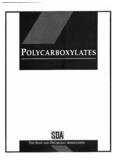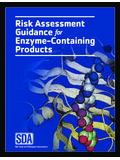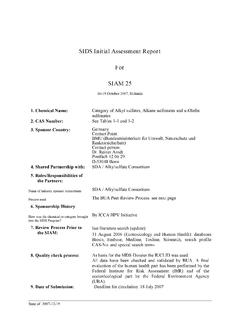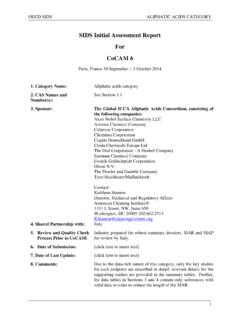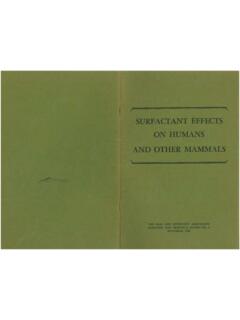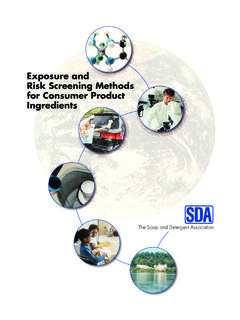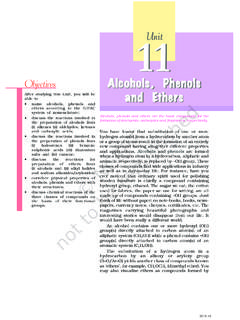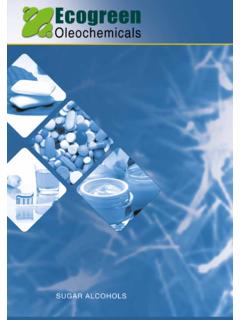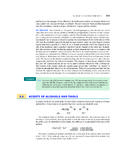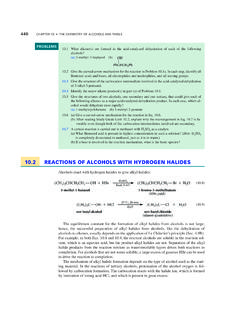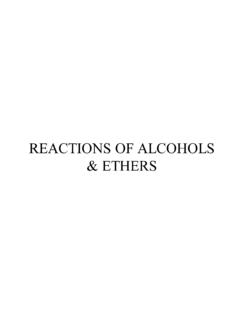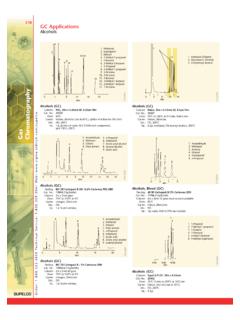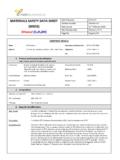Transcription of SIDS Initial Assessment Report For SIAM 22 TOME …
1 OECD sids LONG CHAIN alcohols . sids Initial Assessment Report For siam 22. Paris, France, 18 21 April 2006. TOME 1: SIAR. Category Name Long Chain alcohols (C6-22 primary aliphatic alcohols ). 1. and 2. Chemical CAS no. Chemical name Names and CAS numbers 111-27-3 1-Hexanol 111-87-5 1-Octanol 112-30-1 1-Decanol 112-42-5 1-Undecanol 112-70-9 1-Tridecanol 112-72-1 1-Tetradecanol 629-76-5 1-Pentadecanol 36653-82-4 1-Hexadecanol 143-28-2 9-Octadecen-1-ol, (9Z)- 629-96-9 1-Eicosanol 661-19-8 1-Docosanol 63393-82-8 alcohols , C12-15. 66455-17-2 alcohols , C9-11. 67762-25-8 alcohols , C12-18. 67762-27-0 alcohols , C16-18. 67762-30-5 alcohols , C14-18. 67762-41-8 alcohols , C10-16. 68551-07-5 alcohols , C8-18. 68002-94-8 alcohols , C16-18 and C18 Unsaturated 68155-00-0 alcohols , C14-18 and C16-18-unsatd. 68333-80-2 alcohols , C14-16. 68603-15-6 alcohols , C6-12. 68855-56-1 alcohols , C12-16. 75782-86-4 alcohols , C12-13. 75782-87-5 alcohols , C14-15. 80206-82-2 alcohols , C12-14. 85566-12-7 alcohols , C8-10.
2 85665-26-5 alcohols , C10-12. 97552-91-5 alcohols , C18-22. 90583-91-8 Tridecanol, branched and linear 3. Sponsor Country: United Kingdom 1. OECD sids LONG CHAIN alcohols . 4. Shared Partnership with: 5. Roles/Responsibilities of the Partners: Name of industry sponsor Global ICCA Aliphatic alcohols Consortium /consortium Process used The robust summaries were prepared by contractors to the Global ICCA Aliphatic alcohols Consortium (GIAAC). The data matrix, SIAR and IUCLID dossiers were prepared by Shell Chemicals Ltd and a contractor, Peter Fisk Associates. 6. Sponsorship History How was the chemical or category brought into the OECD HPV Chemicals Programme ? 7. Review Process Prior to All information was reviewed by the Global ICCA Aliphatic the siam : alcohols Consortium. UK government (the Environment Agency of England and Wales, and MRC Institute for Environment and Health) peer-reviewed the sids documents, and audited selected key studies to check the robust study summaries.
3 8. Quality check process: 9. Date of Submission: 10. Date of last Update: 11. Comments: sids dossiers already existed for 1-Dodecanol (CAS 112-53-8). and 1-Octadecanol (CAS 112-92-5) (published in 1998 and 1995. respectively); the present document updates and extends the earlier ones; brings in new information, and therefore replaces it. No conclusions drawn in the earlier review are amended. Available data for these substances are compiled in sids . dossiers related to each CAS number. The reliability of each data point has been considered during this period of review, in accordance with the guidance of the Fraunhofer Institut f r Toxikologie und Aerosolforschung. The following standard reliability codes, defined by Klimisch et al. (1997)1, apply, in accordance with the sids guidance: (1) Valid without restriction (2) Valid with restrictions (3) Invalid (4) Not assignable. Results considered to be Invalid are not used in the discussions or conclusions in this Report .
4 However, results which are of Non-assignable reliability may be fully valid, although 1 Klimisch, HJ, Andreae, E and Tillmann, U 1997. A systematic approach for evaluating the quality of experimental and ecotoxicological data. and Pharm. 25:1-5. 2. OECD sids LONG CHAIN alcohols . insufficient details were available to be sure of this; therefore reliability (4) results are used in this Report . The reliability code of each data point is given. Key studies are flagged in the sids dossiers. These are studies with the highest reliability/adequacy. If several studies showed comparable reliability/ adequacy, the study with the lowest LC/LD/EC50 or NOEC/ NOAEL has been indicated as the key study. For some endpoints, fully reliable results are not available and it has been necessary to use a weight of evidence including results of studies of non-assignable reliability. In such cases the results are identified as key studies as they are of high importance to the data set.
5 For transparency, some study summaries in the sids dossier have been transferred from the previously published version of IUCLID or from the previous sids submission. In some cases, it has not been possible to retrieve the original literature/study reports using the reported citation or as a result of literature searching. In some cases, change of business ownership meant that internal study reports cited in previous summaries could not be accessed. In some other cases, certain non- sids . endpoints, and in areas where a very large amount of literature has been published, it was not considered necessary to pursue all individual published sources due to weight of evidence of more reliable results. In all cases, reliability (4) applies, because the original documentation has not been reviewed in the development of the dossier. Such results are clearly identified in the sids dossier and more details are given therein. 3. OECD sids LONG CHAIN alcohols . sids Initial Assessment PROFILE.
6 Chemical Category Name Long Chain alcohols (C6-22 primary aliphatic alcohols ). Chemical name CAS no. Chemical name CAS no. 1-Hexanol 111-27-3 alcohols , C16-18 67762-27-0. 1-Octanol 111-87-5 alcohols , C14-18 67762-30-5. 1-Decanol 112-30-1 alcohols , C10-16 67762-41-8. 1-Undecanol 112-42-5 alcohols , C8-18 68551-07-5. 1-Tridecanol 112-70-9 alcohols , C14-16 68333-80-2. 1-Tetradecanol 112-72-1 alcohols , C6-12 68603-15-6. 1-Pentadecanol 629-76-5 alcohols , C12-16 68855-56-1. 1-Hexadecanol 36653-82-4 alcohols , C12-13 75782-86-4. CAS Nos 1-Eicosanol 629-96-9 alcohols , C14-15 75782-87-5. 1-Docosanol 661-19-8 alcohols , C12-14 80206-82-2. alcohols , C12-15 63393-82-8 alcohols , C8-10 85566-12-7. alcohols , C9-11 66455-17-2 alcohols , C10-12 85665-26-5. alcohols , C12-18 67762-25-8 alcohols , C18-22 97552-91-5. 9-Octadecen-1-ol 143-28-2 alcohols , C14-18. 68155-00-0. (9Z)- & C16-18-unsatd alcohols , C16-18 68002-94-8 Tridecanol, 90583-91-8. & C18 Unsaturated branched & linear Structural Formula CH3(CH2)nCH2OH Linear n = 4 to 20.
7 CH3(CH2)nCHCH2OH 2-Alkyl branched n + m = 3 to 18, and m is (CH2)mCH3 predominantly = 0. Present in essentially-linear alcohols CH3(CH2)nCH(CH2)mOH Other-methyl branching n + m= 9 or 10. CH3 Present in essentially-linear Fischer- Tropsch derived alcohols CH3(CH2)7CH=CH(CH2)7CH2OH Unsaturated 9-Z unsaturated components are present in some commercial products. SUMMARY CONCLUSIONS OF THE SIAR. Category Rationale This category covers a family of 30 primary aliphatic alcohols within a carbon chain length range of C6-C22. Commercial products generally include several aliphatic alcohol components, with a range of carbon chain lengths present. The family consists of alcohols with varying compositions and structures. Composition depends on the route to manufacture and the related feedstocks. Most of the alcohols have linear carbon chains but certain 4. OECD sids LONG CHAIN alcohols . manufacturing processes create branched structures. Data are also available for eleven other similar substances, which support the category.
8 Non-sponsored alcohols may not be HPV or may not be produced by members of the consortium, but have structures similar to sponsored linear alcohols . Key points are that the members share: The same structural features Similar metabolic pathways Common mode of ecotoxicological action Common levels and mode of human health related effects. This allows multi-component reaction products to be considered within the Category by the application of validated models of exposure and effects, on the basis of detailed knowledge of the composition. For the environmental end points, this has been done in two ways: Read-across: this applies to biodegradability, for which sufficient data are available to allow read across from the pattern of degradation across the entire category to fill data gaps directly. For algae, read-across-based expert judgement was applied, taking into account measured and predicted effects in daphnids and fish for the substance of interest. Modelling: a model of the ideal solubility of the components of the substances has been set up, which allows component and total solubility at any loading rate to be calculated.
9 By use of knowledge of the properties of each component, ecotoxicological effects have been predicted. Human Health Considering the manufacturing processes two sub-categories of aliphatic alcohols can be distinguished: Linear alcohols : Saturated or unsaturated primary -non-branched- aliphatic alcohols containing an even number of carbon atoms. Essentially linear alcohols : Saturated, primary linear aliphatic alcohols and their saturated, mono branched primary alcohol isomers of corresponding carbon chain length A detailed Assessment of the toxicological database of both sub-categories shows that the linear and the essentially linear alcohols are of a low order of toxicity following acute and repeated exposures. The endpoints of skin and eye irritation show a trend within each of the sub-categories with the lower members of the category displaying a more pronounced response than the longer-chained- alcohols . The overall toxicological profile of the sub-categories of linear and essentially linear alcohols is qualitatively and quantitatively similar for all end points assessed.
10 The observed relationship between chain length and toxicological properties is equally present for both sub-categories. Moreover, the mammalian metabolism of the aliphatic alcohols is highly efficient and proceeds similarly for each of the sub-categories. The first step of the biotransformation the alcohols are oxidised to the corresponding carboxylic acids, followed by a stepwise elimination of C2 units in the mitochondrial -oxidation process. The metabolic breakdown of mono-branched alcohol isomers is also highly efficient and involves processes that are identical to that of the linear aliphatic alcohols . The presence of a side chain does not terminate the -oxidation process, however in some cases a single Carbon unit is removed before the C2 elimination can proceed. Surrogate and supporting substances have been assessed for this category in order to address potential concerns associated with differing degrees of branching and to justify the read-across within the sub-category of the essentially linear alcohols .
